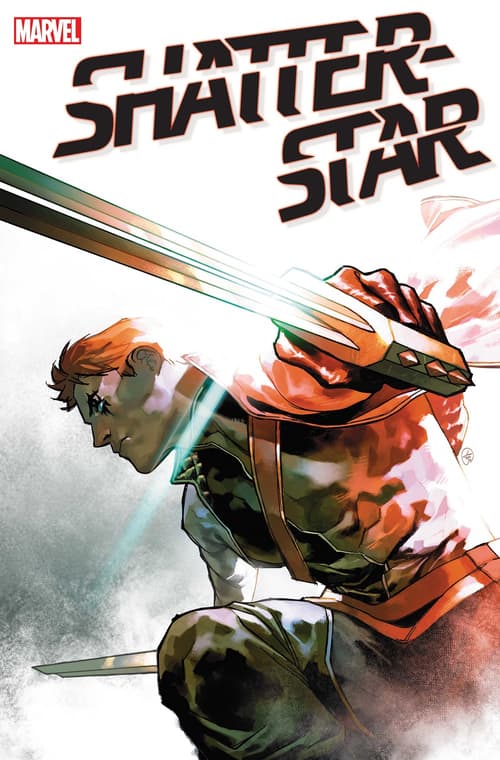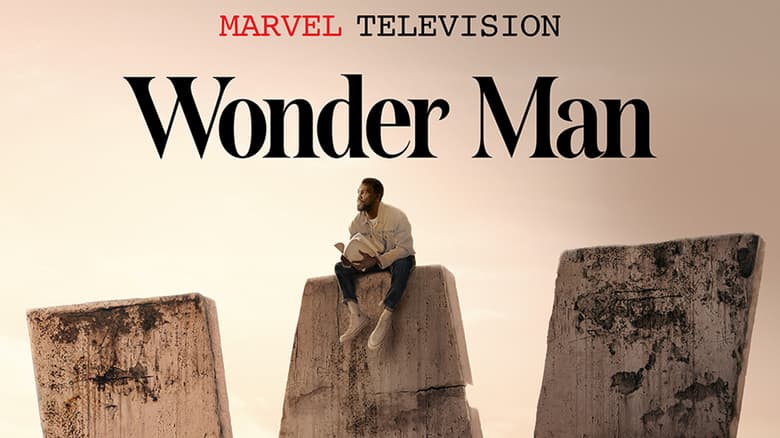Tim Seeley's Must-Read Shatterstar Stories
Prep for Shatterstar #1 by reading through some of the writer's favorite tales!
On October 3, one of mutantdkind's most interesting characters finds himself in the spotlight thanks to Tim Seeley and Carlos Villa's SHATTERSTAR #1!
A genetically engineered warrior from a future ruled by Mojo V, the mutant known as Gaveedra-7 has long served as a hero on our Earth—most often seen in books like X-FORCE and X-FACTOR. Over time, readers have learned bits and pieces about Shatterstar, but Seeley thinks there's much, much more to discover about the hero.
To get an idea of where he might be headed in the near-future, we sat down with Tim to look back at some of his favorite moments in Shatterstar history.
Marvel.com: Based on how you've spoken about Shatterstar before, it sounds like you were right there for his first appearance in NEW MUTANTS #99—is that right?
Tim Seeley: I’m the perfect age for the sort of big-screen generation. I was 13 in the 1990s, so when Shatterstar debuted in ’91, I was 14 years old. I was buying NEW MUTANTS at the time, and I totally remember him showing up. I remember thinking he was like pretty boy Wolverine. I remember the scene so vividly [in NEW MUTANTS #100] where he stabs himself to stab another dude, and it blew my mind. It took me like five more years to realize that that was a panel from Ronin, but that’s okay. It was still a defining moment for me with the character.
Marvel.com: He's a very stoic warrior character in those early appearances. Do you think it was more his aesthetic that appealed to you then?
Tim Seeley: Yeah, for sure. It’s a great design. The white. There weren't a lot of Super Heroes—aside from Moon Knight and a couple of others—with white costumes. At the time, I was a teenage boy and there was just this sense that when something showed up that it was so damn important, you know?
So Rob Liefeld and Fabian Nicieza did such a good job with all those things, because they would throw these characters at you. Just tons of them would debut in one issue, and you’d be like, “Oh my god, I have to know everything because this will clearly impact all the stories forever going forward!” I think that that really appealed to me. He was new. When a new character would debut, like Shatterstar or Cable or Darkhawk or Sleepwalker, they felt more like they were your character because they came out under your watch.

Marvel.com: I'm guessing that after those first few NEW MUTANTS issues, you made the transition to X-FORCE.
Tim Seeley: Oh yeah, absolutely. I was on X-FORCE through…a long time…all through when Fabian and Greg Capullo were doing it, and all that stuff [in X-FORCE #15-#25]. It was like aggressive X-Men punching people, like it was right in my wheelhouse for that age. I remember him being on QUASAR and being like “Wow, this guy’s really good.” But it wasn’t until X-FORCE that you saw that he could draw really ripped super grim-and-gritty '90s Super Heroes. That became really apparent when he was drawing X-FORCE.
Marvel.com: Aside from Shatterstar stabbing an attacker through his own chest, were there any other moments in the earlier X-FORCE run that really stuck out to you?
Tim Seeley: WOLVERINE #54 by Fabian and Darick Robertson, where it's basically just him and Shatterstar fighting for ten pages, and then they beat up these punks who are like the first reality stars. I just remember how cool it was to have him face off against Wolverine and that he was totally fearless about it. He wasn’t like, “Oh, you’re a legend.” He was just like, “I’m gonna kick your ass.” He had no fear about it. But ultimately, it’s kind of a story about how he was a young guy who is inexperienced. Wolverine knew stuff he didn’t.
The Shattershot Annuals—X-MEN ANNUAL #1, X-FACTOR ANNUAL #7, UNCANNY X-MEN ANNUAL #16, X-FORCE ANNUAL #1—which came out in the mid-'90s, had a flash-forward storyline where you see Shatterstar replace Mojo as the leader of Mojoworld. He basically became the same as Mojo. To control his planet, he just needed to do the same thing that Mojo did, because people wanted blood. I remember that being really profound to me as a teenager.
Marvel.com: Did you revisit those stories in preparation for your SHATTERSTAR limited series, or did you just source it all from memory?
Tim Seeley: I pitched my story from memory, because I do find the best pitches come from your impression, from your version, from what you remember. It usually ends up being the most important; the things that will ultimately give you the best, iconic story for a character. After I pitched it, I dug through my basement, found my X-FORCE books, and did a big re-read. Then went back and read a lot of Peter David’s X-FACTOR stuff as well.
My approach to this was that this is a story that only he can star in. That was my approach: how are we going to make this very personal and very much about the character? Let’s learn some new things about him and about his backstory that we haven’t seen before.
Marvel.com: It seems like Shatterstar went from the somewhat simple warrior to someone much more complex after appearing in Peter David's X-FACTOR #43.
Tim Seeley: Yeah, when you put him in X-FACTOR—basically, a detective agency—Peter had to figure out new ways to make what he stood for make sense in that context. He did a great job, because he focused on the human aspects, the parts of him that have to deal with a world that’s not his own. If he’s going to solve crimes and protect people, and all of that sort of stuff, he needs to suddenly know how the world works. And that, I think, was a great way to expand his character.
Marvel.com: There’s an interesting dynamic that often pops up in different Shatterstar stories, where he’s like, “What is this place—Earth—doing to me?” Will that be a part of your story too?
Tim Seeley: You’re exactly right. Basically, the approach I took is that is the story; it’s him trying to find a place for himself when he had a function before. He rebelled. We do know that he joined the Cadre Alliance and he fought against Mojo. We don’t know why. We’ve never known why, and so my job here was: I’m going to tell you why, and it’s going to be based in what we know about him so far and a couple of things we didn’t know. And hopefully expand on a lot of what we’ve seen before, but also give him a new place in the Marvel Universe.
Read SHATTERSTAR #1, by Tim Seeley and Carlos Villa, on October 3!
The Daily Bugle
Can’t-miss news and updates from across the Marvel Universe!




